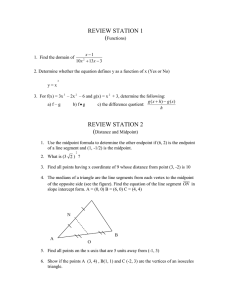18.022 Recitation Handout 22 September 2014 Colley
advertisement
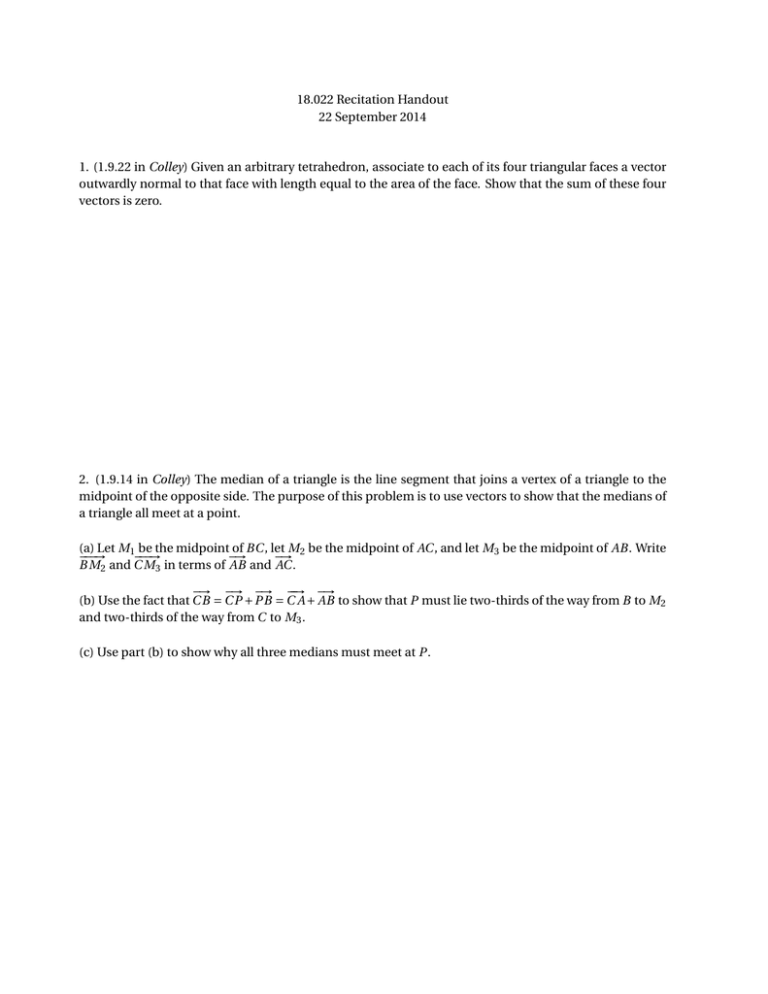
18.022 Recitation Handout 22 September 2014 1. (1.9.22 in Colley) Given an arbitrary tetrahedron, associate to each of its four triangular faces a vector outwardly normal to that face with length equal to the area of the face. Show that the sum of these four vectors is zero. 2. (1.9.14 in Colley) The median of a triangle is the line segment that joins a vertex of a triangle to the midpoint of the opposite side. The purpose of this problem is to use vectors to show that the medians of a triangle all meet at a point. (a) Let M 1 be the midpoint of BC , let M 2 be the midpoint of AC , and let M 3 be the midpoint of AB . Write −−−→ −−−→ −→ −→ B M 2 and C M 3 in terms of AB and AC . −→ −→ −→ −−→ −→ (b) Use the fact that C B = C P + P B = C A + AB to show that P must lie two-thirds of the way from B to M 2 and two-thirds of the way from C to M 3 . (c) Use part (b) to show why all three medians must meet at P . 3. Find the equation of a plane P perpendicular to (1, 2, −1) containing the line that passes through the two points (−2, 5, 4) and (5, 1, 3). Find the distance from P to the plane P 0 whose equation is x+2y −z = 28. 4. (Fun/Challenge problem) Example 9 of Section 1.5 in the book asks us to compute the distance between the lines `1 (t ) = (0, 5, −1) + t (2, 1, 3) and `2 (t ) = (−1, 2, 0) + t (1, −1, 0). The solution given in the book uses vectors; our goal here is to take an algebraic approach for comparison. Define D(s, t ) = |`1 (t ) − `2 (t )|2 , and find the values of s and t which minimize D(s, t ) (using calculus methods or otherwise).
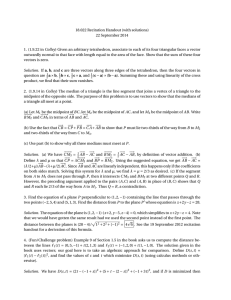
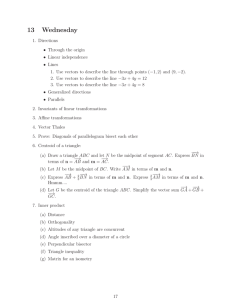

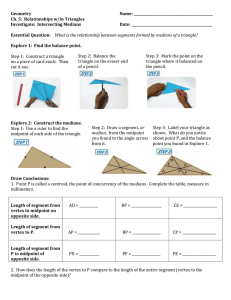
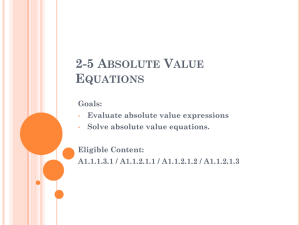
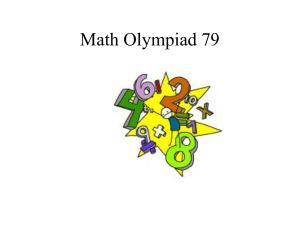
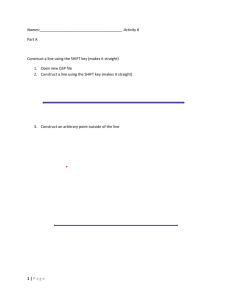
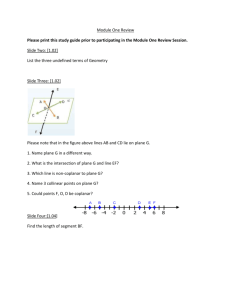
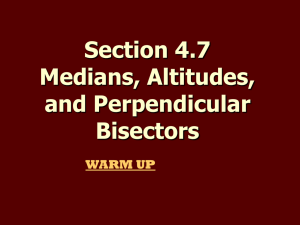

![Geometry Chapter 5 Test Review [D] FI FK = x + .](http://s3.studylib.net/store/data/008666367_1-d53b55eac2e28c448503e9ed114a5152-300x300.png)
